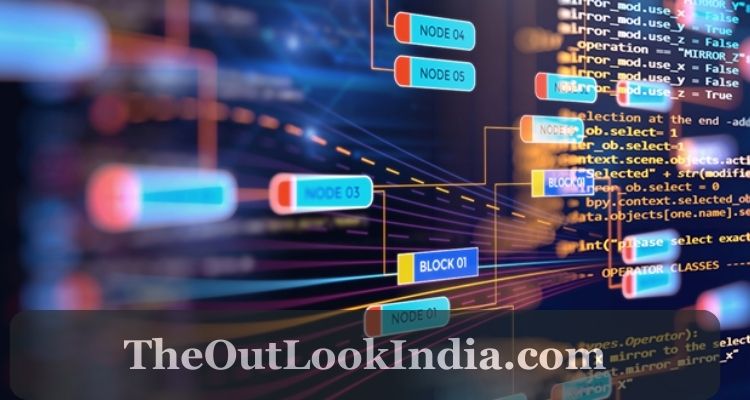In the ever-evolving landscape of cybersecurity, understanding what qualifies as a device is paramount. As we navigate through this article, we’ll delve into the intricacies of devices, ranging from hardware to software, their identification methods, significance in cybersecurity, challenges, emerging technologies, best practices, future trends, and real-world case studies. Here we will discuss about In the context of cybersecurity, what can be considered a device?
Also Read: trendzguruji.me
I. Introduction
A. Definition of a Device in Cybersecurity
In the digital realm, a device is more than just a piece of hardware. It encompasses a broad spectrum, including software entities, playing a crucial role in the cybersecurity domain.
B. Importance of Identifying Devices
Effective device identification forms the foundation of robust cybersecurity practices, allowing organizations to secure their networks and data comprehensively.
II. Types of Devices
A. Hardware Devices
1. Examples
From traditional computers to interconnected IoT gadgets, hardware devices are diverse in nature.
2. Security Challenges
Hardware devices pose unique security challenges, and understanding them is pivotal for crafting effective defense mechanisms.
B. Software Devices
1. Examples
Software entities like virtual machines and containers contribute significantly to the digital landscape.
2. Vulnerabilities
Exploring the vulnerabilities associated with software devices sheds light on potential cyber threats.
III. Device Identification Methods
A. MAC Address
MAC addresses serve as unique fingerprints for devices, aiding in their identification across networks.
B. IP Address
The role of IP addresses in pinpointing device locations and activities cannot be overstated.
C. Device Fingerprints
Advanced device fingerprints provide a granular level of identification, enhancing overall cybersecurity measures.
IV. Significance in Cybersecurity
A. Access Control
Proper device identification facilitates stringent access control measures, preventing unauthorized entry into networks.
B. Intrusion Detection
Swift detection of unauthorized devices is crucial for preventing cyber intrusions and data breaches.
C. Network Security
A holistic approach to device identification strengthens overall network security, ensuring a robust defense against cyber threats.
V. Challenges in Device Identification
A. Dynamic IP Addresses
The dynamic nature of IP addresses poses challenges in consistently identifying devices, requiring adaptive cybersecurity measures.
B. Spoofing and Masquerading
Cybercriminals employ tactics like spoofing and masquerading, complicating the identification of genuine devices.
C. Diversity of Devices
The sheer diversity of devices, from smartphones to industrial IoT machines, adds complexity to the identification process.
VI. Emerging Technologies
A. IoT Devices
1. Security Risks
The proliferation of IoT devices introduces new security risks that must be addressed.
2. Protective Measures
Implementing protective measures is essential to mitigate the vulnerabilities associated with IoT devices.
B. Blockchain in Device Identification
Blockchain technology offers a secure and transparent method for authenticating devices in the digital landscape.
VII. Best Practices in Device Management
A. Regular Audits
Frequent audits of devices ensure that the security infrastructure remains up-to-date and resilient.
B. Network Segmentation
Segmenting networks enhances security by limiting the impact of potential breaches, making device management more effective.
C. Firmware and Software Updates
Regular updates to device firmware and software are critical in addressing known vulnerabilities and ensuring a secure environment.
VIII. Future Trends
A. Artificial Intelligence in Device Recognition
The integration of artificial intelligence in device recognition promises more accurate and efficient identification methods.
B. Quantum Computing Implications
The advent of quantum computing introduces new challenges and opportunities in the realm of device identification and security.
IX. Case Studies
A. Notable Cybersecurity Incidents
Examining past incidents sheds light on the consequences of inadequate device management.
B. Successful Device Management Strategies
Highlighting successful strategies implemented by organizations in effectively managing and securing their devices.
X. Conclusion
In conclusion, the evolving nature of devices in cybersecurity demands a proactive and dynamic approach. From understanding the intricacies of hardware and software devices to embracing emerging technologies and implementing robust management practices, organizations must remain vigilant in safeguarding their digital assets.
Frequently Asked Questions (FAQs) [In the context of cybersecurity, what can be considered a device?]
- What is the primary role of device identification in cybersecurity?
- Device identification is crucial for enforcing access control, detecting intrusions, and enhancing overall network security.
- How does the diversity of devices impact cybersecurity?
- The diverse range of devices introduces complexity in identification, requiring adaptive cybersecurity measures to address various vulnerabilities.
- Why is regular auditing of devices essential for cybersecurity?
- Regular audits ensure that the security infrastructure remains up-to-date, addressing potential vulnerabilities promptly.
- What role does artificial intelligence play in device recognition?
- Artificial intelligence enhances device recognition accuracy, paving the way for more efficient identification methods.
-
How does blockchain contribute to device identification in the digital landscape?
- Blockchain technology provides a secure and transparent method for authenticating devices, bolstering overall security.

